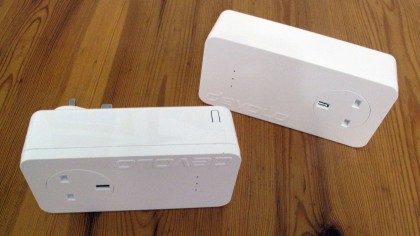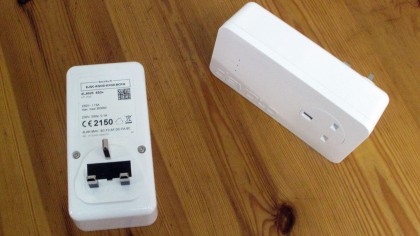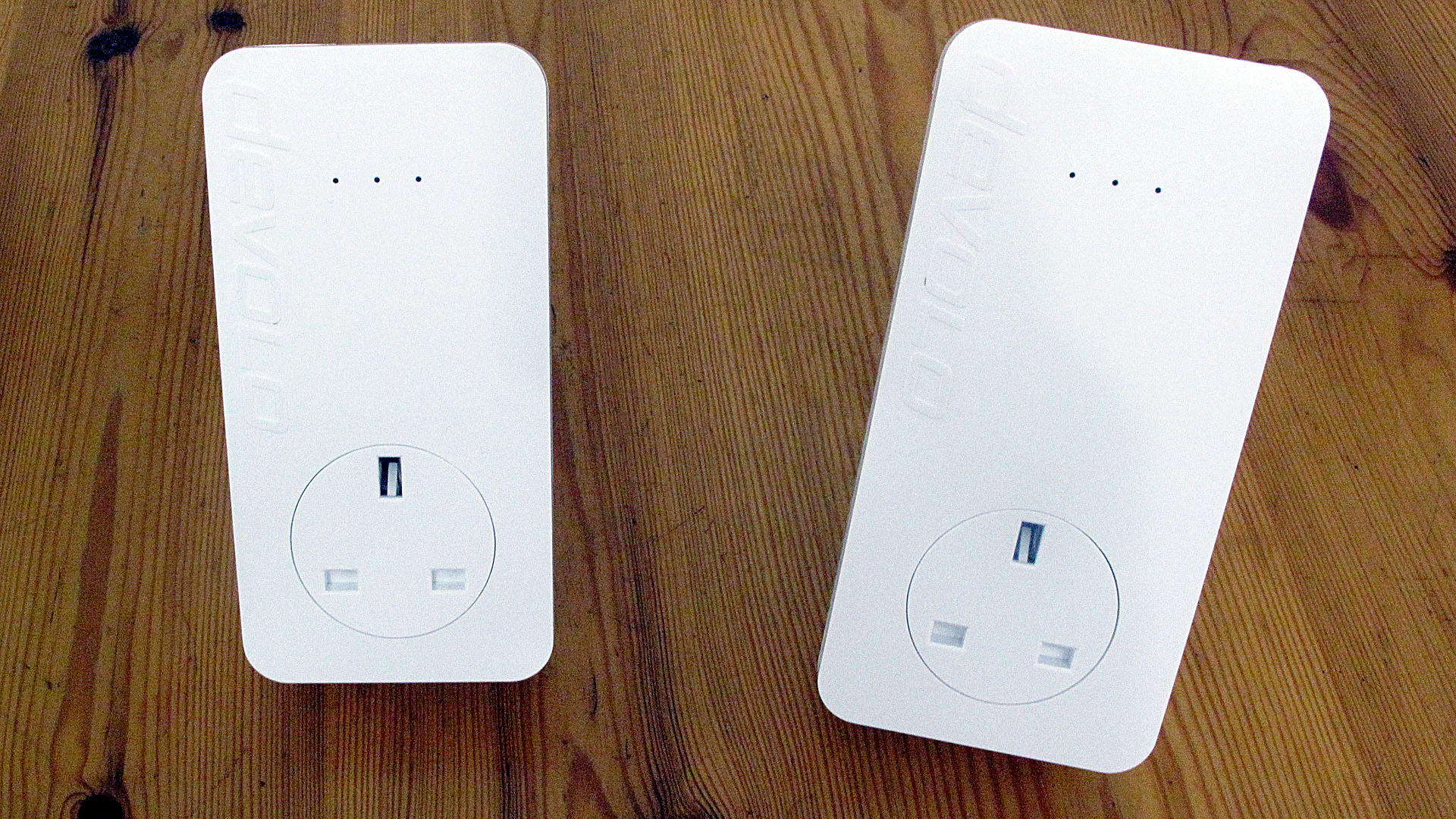Why you can trust TechRadar
The first thing you notice about Devolo's dLAN 650 Triple+ Starter Kit HomePlugs is just how easy they are to set up and use. You simply plug them in, enter their security ID code in Devolo's Cockpit management software and they make the connection. It's that simple. When the initial computer-to-one-HomePlug network has been created in this way, further plugs can be added just by plugging them in and adding their ID in Cockpit.
It's easier to get at the new Devolo dLAN 650 Triple+ Starter Kit HomePlugs' Ethernet ports too. Unlike the previous generation of Devolo HomePlugs, which located the ports on the foot of the device which hung downwards from the plug socket, the new models position the plug pins at the foot of the HomePlug and the Ethernet ports on top. This is far more convenient and accessible, especially when they're located behind furniture or in otherwise awkward-to-reach places.

That said, these HomePlugs are still very bulky, especially compared to Devolo's own mini HomePlugs. This is, of course, inevitable given that they have pass-through sockets for plugging in another electrical device, but it's still a consideration when it comes to placement. Thankfully, the new upwards-facing form factor means they can no longer be obstructed by large skirting boards, though.
According to Devolo, the new 650+ range of HomePlugs give an average speed increase of around 30%, but in poor conditions – maybe in a house where the wiring is very old, or with the plugs located on power strips – the improvement can be as high as 200 to 300%. We were certainly impressed by the performance boost we got in our tests, in an old, Victorian house with mediocre wiring.
We set up a HomePlug network using four Devolo 500Mbps plugs, recorded the speeds using Devolo's own Cockpit management software, then swapped them for new 650+ HomePlugs and compared the results. Between our computer and our router, in the next room, we got 316Mbps using the old plugs, but an amazing 584Mbps with the new ones, an increase of almost 85%.
From the computer to a HomePlug in the boiler cupboard at the back of the house, it went from 178Mbps to 270Mbps, an increase of just under 52%. From the computer to the spare bedroom upstairs, where we installed the HomePlugs on a power strip instead of a wall socket (this isn't recommended, but in our experience, you can usually get away with it), the increase was less marked. A speed of 127Mbps went up to 161Mbps, a still-respectable increase of almost 27%.
A kind word for the Cockpit application is also appropriate. It's incredibly easy to use, and makes it really simple to manage your HomePlug network. After downloading from Devolo's website, it monitors the status of your network, showing the transfer speeds between each of your HomePlugs. It also lets you protect your network with a single password, add new HomePlug adaptors and check for firmware upgrades.

You can also switch off individual plugs' data communication (much easier than unplugging, for a temporary disconnection), switch off their LED indicators should they prove intrusive and give each adaptor an individual name. If you have plugs that also provide wireless access points, you can manage this from Cockpit too.
Devolo's new dLAN 650+ HomePlugs, including the two in this dLAN 650 Triple+ Starter Kit, offer a significant performance increase over their 500-series predecessors, but there has been no price hike. Who could say fairer than that?
